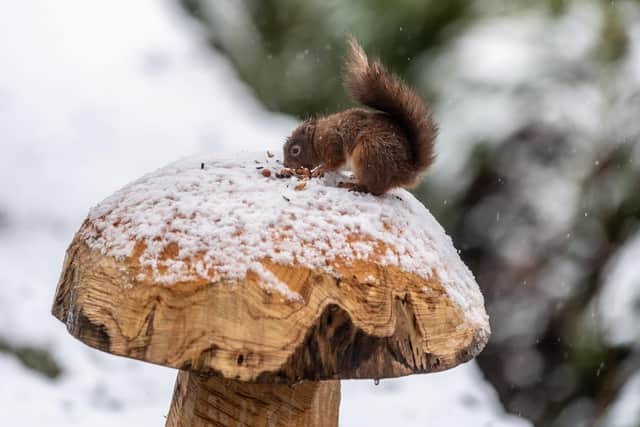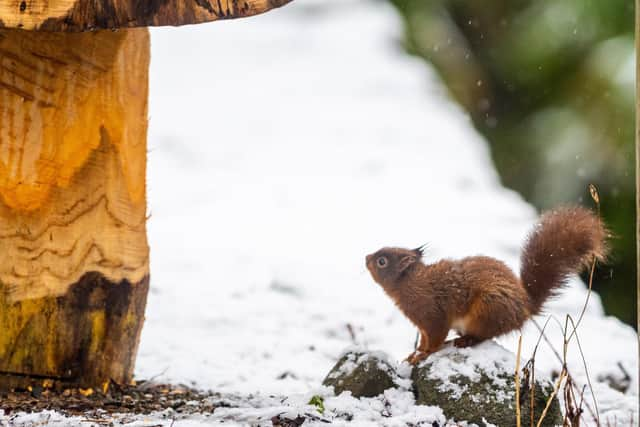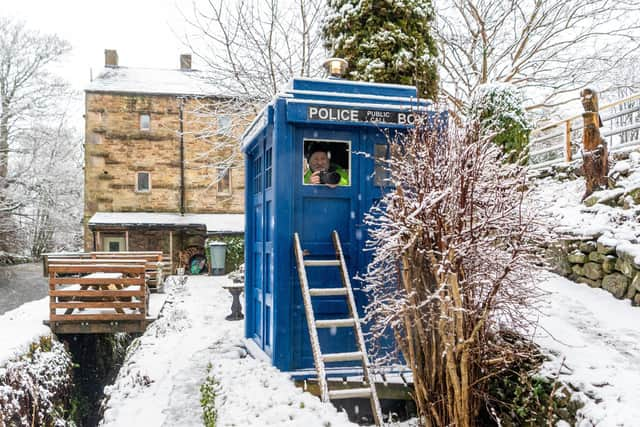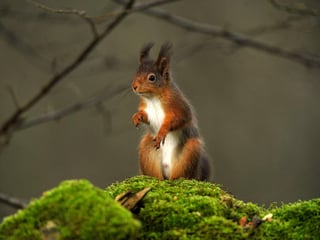Meet the delightful pair of red squirrels who are regular visitors to this Yorkshire Dales garden
Neil and Jane McNair, who run Low Mill Guesthouse in Bainbridge, first began seeing one of the rare creatures in their willow tree last summer.
Since then, they have installed a feeder, filled it with fruit and nuts and now regularly see two red squirrels who visit for breakfast most mornings.


Advertisement
Hide AdAdvertisement
Hide AdThe McNairs have even converted a vintage police call box into a hide that they hope guests will use to watch the wildlife when the B&B is allowed to open for bookings once again.
The reds are thought to have spread out from the 'refuge' created for the small Wensleydale population at Snaizeholme, where there is a viewing area, and it is the first time in generations they have been seen in Bainbridge.
This coniferous habitat is managed so that any grey squirrels in the surrounding 'buffer zone' area are culled in order for the reds to breed and thrive - an undertaking which is difficult to achieve on a larger scale.
Although young reds leave the refuges to find their own territories, they often to struggle to establish themselves once they are in areas where greys are prevalent.


Advertisement
Hide AdAdvertisement
Hide AdSightings in Bainbridge, Hawes and Askrigg over the past few months suggest that a bumper pine cone crop and breeding season has led to a population boom which pushed some of the juveniles out, yet it remains to be seen whether they will be able to sustain themselves without control of the greys.
Reds often lose out to the larger, non-native greys in the competition for food and resources, and greys are immune to squirrel pox, which kills reds.
The recolonisation of Wensleydale by the fragile community of reds owes itself to a forward-thinking farmer and a commercial Christmas tree plantation.
The late Hugh Kemp and his wife Jane bought Mirk Pot Farm in 1967. The exposed land was devoid of trees and many locals told him he could not grow firs there.


Advertisement
Hide AdAdvertisement
Hide AdMr Kemp managed to successfully establish a conifer plantation, mixing his planting with deciduous trees. A few years later, a forestry worker told him he had seen a red squirrel in the area.
The reds were thought to be locally extinct following the ravages of squirrel pox as well as a cold winter in the early 1960s. But two years later, there were further sightings that put their existence beyond doubt. The Kemps encouraged a small colony on their farm, which became a sanctuary for many species that had become rare in the area. The squirrels were believed to have spread from the Cumbrian population.
Last August, Yorkshire Dales National Park wildlife conservation officer Ian Court spoke to the Yorkshire Post about the red squirrels' spread into towns - and why it is so difficult to re-establish them in significant numbers.
Comment Guidelines
National World encourages reader discussion on our stories. User feedback, insights and back-and-forth exchanges add a rich layer of context to reporting. Please review our Community Guidelines before commenting.
